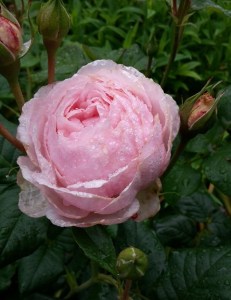The Rock Pool garden is at the moment being complimented by visitors as having a feel to it like Monet’s Japanese garden. The Japanese influence dates from Margaret Steven’s time when she established her 1966 garden where the Gazebo now stands.
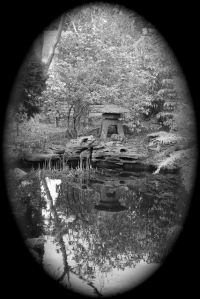
The lantern in winter 2011
The lantern at the rock pool was added early in the life of the Resort so we presume by Margaret Stevens.
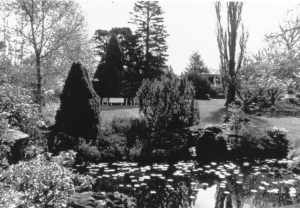
The rock pool at Resort take over (late 1960s), low stream crossing visible behind rocks on the right, lantern top visible on left
The wooden Japanese bridge replaced what looks in the old photos from early Resort days like a stone crossing similar to the one remaining. The wooden bridge was originally painted Brunswick green. We painted it red and lowered the handrails to try and integrate it a little with the pool and brighten the area in winter when the plantings at the bridge end have all died back.
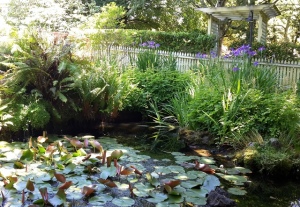
Rock pool waterlilies and iris with astilbe still to flower. The red bridge is just visible in the background behind the ferns.

Japanese iris
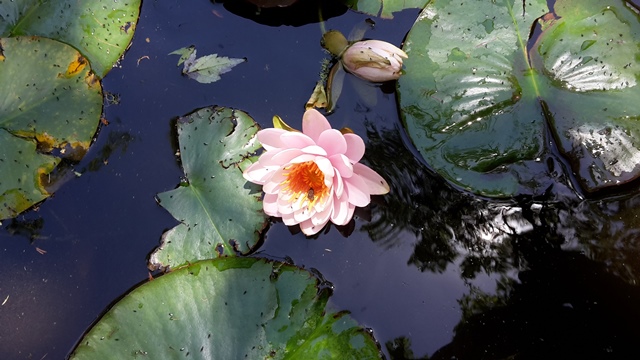 The Monet feel comes mostly from the water lilies planted by Hector Hood for Lady Fairfax, the Japanese iris that have been planted more recently and the whole linked by the lantern and bridge.
The Monet feel comes mostly from the water lilies planted by Hector Hood for Lady Fairfax, the Japanese iris that have been planted more recently and the whole linked by the lantern and bridge.
We are trying to establish some evergreen perennials at the bridge end – white Daphne and Buxus sempervirens to be trained into balls. Lady Fairfax had a buxus ball in her flower border, it is now a small tree! If these plantings are successful we may be able to repaint the bridge, maybe even Monet’s turquoise. There is some repair work required to the pool edge at this end which is not visible when the plants have grown. It is the spot where the wood ducks slide into the pool.






 The Monet feel comes mostly from the water lilies planted by Hector Hood for Lady Fairfax, the Japanese iris that have been planted more recently and the whole linked by the lantern and bridge.
The Monet feel comes mostly from the water lilies planted by Hector Hood for Lady Fairfax, the Japanese iris that have been planted more recently and the whole linked by the lantern and bridge.





